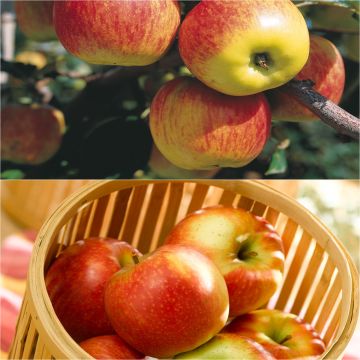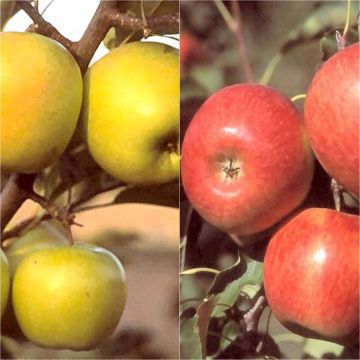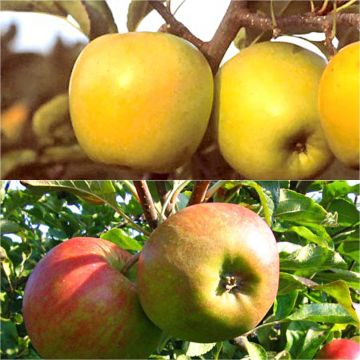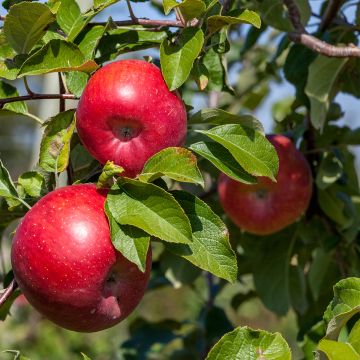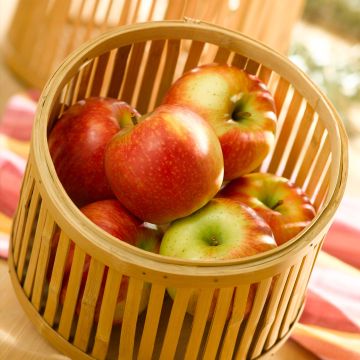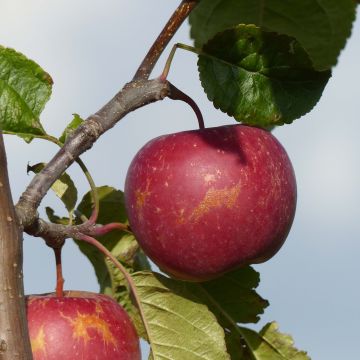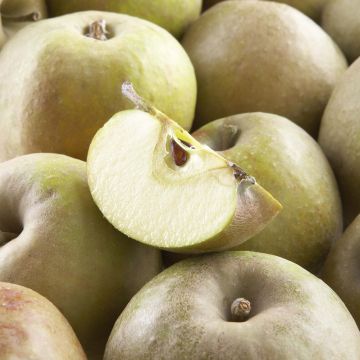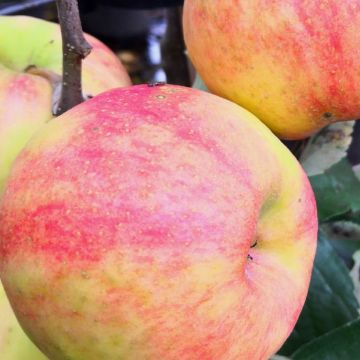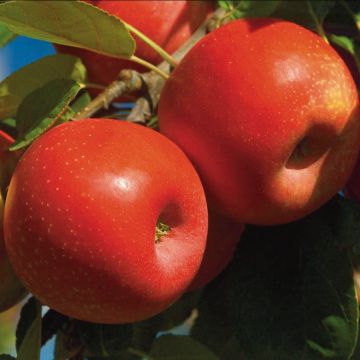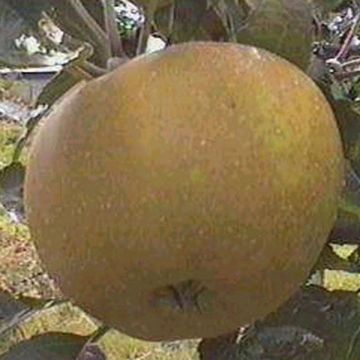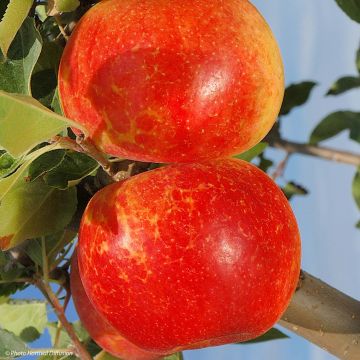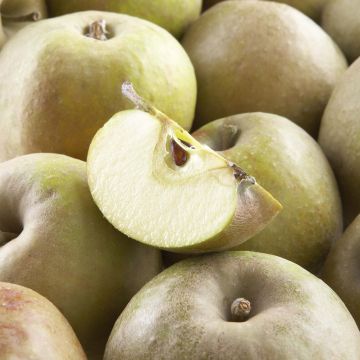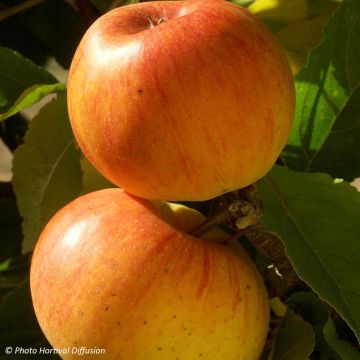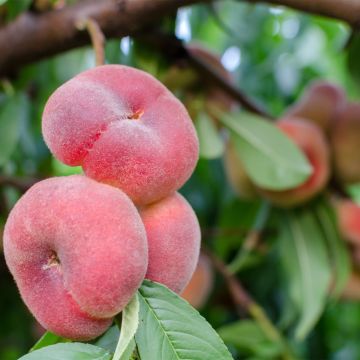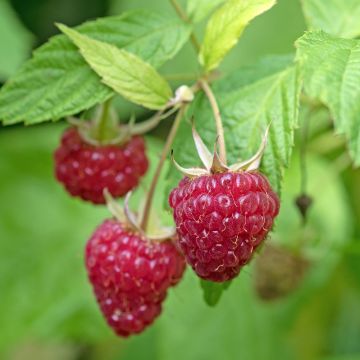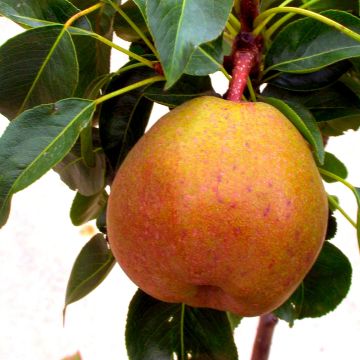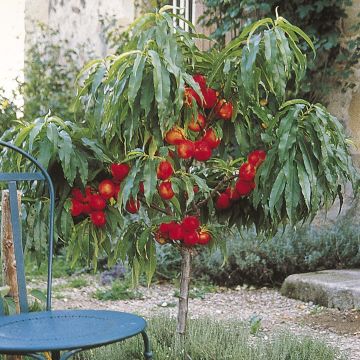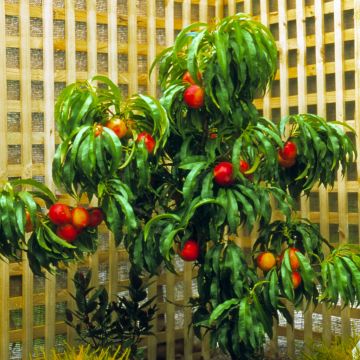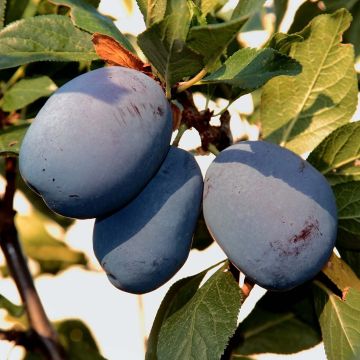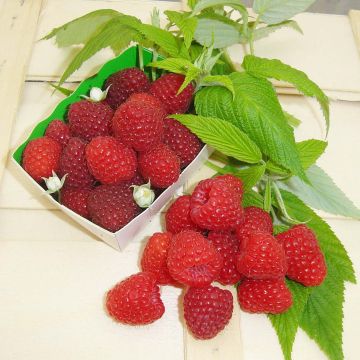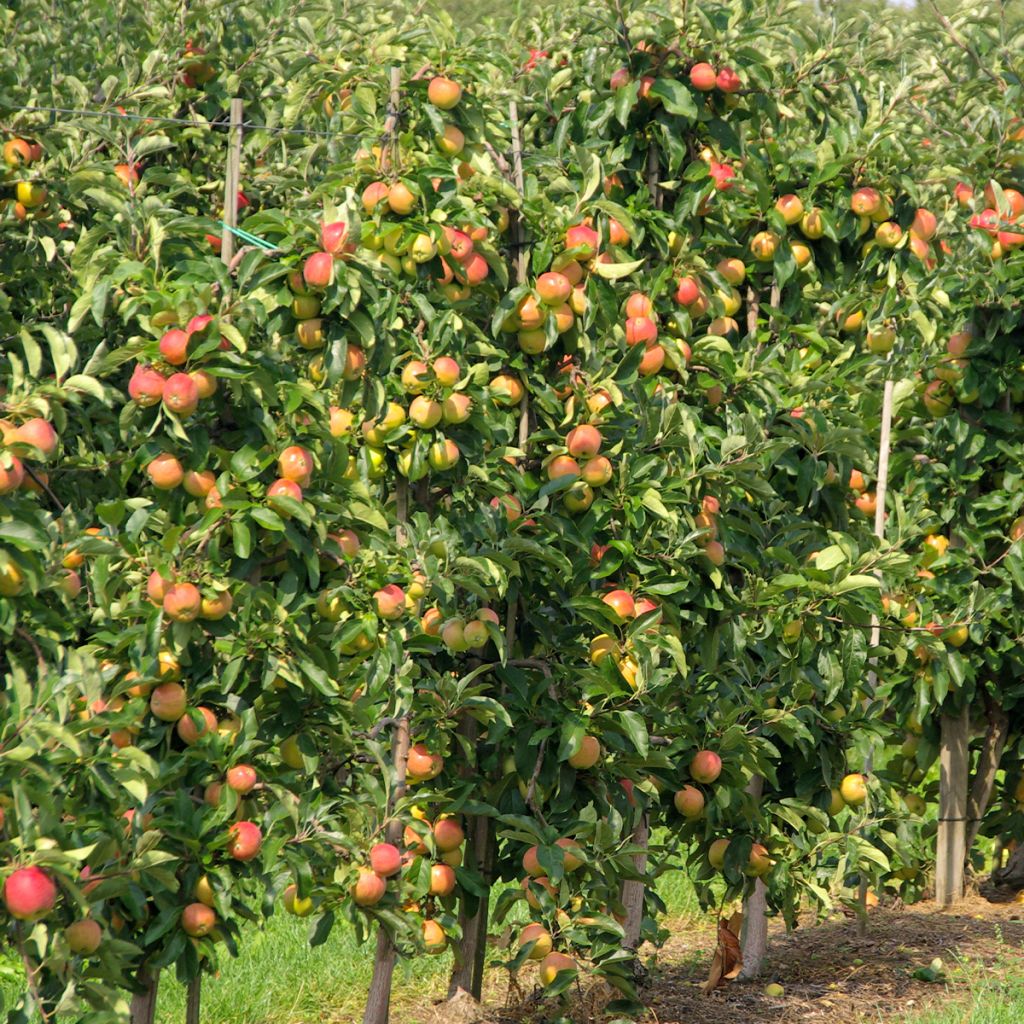

Columnar Apple Tree Versailles Delgrico - Georges Delbard
Columnar Apple Tree Versailles Delgrico - Georges Delbard
Malus domestica Versailles® 'delgrico'
Apple, Orchard apple, Table apple, Cultivated apple
Special offer!
Receive a €20 voucher for any order over €90 (excluding delivery costs, credit notes, and plastic-free options)!
1- Add your favorite plants to your cart.
2- Once you have reached €90, confirm your order (you can even choose the delivery date!).
3- As soon as your order is shipped, you will receive an email containing your voucher code, valid for 3 months (90 days).
Your voucher is unique and can only be used once, for any order with a minimum value of €20, excluding delivery costs.
Can be combined with other current offers, non-divisible and non-refundable.
Why not try an alternative variety in stock?
View all →This plant carries a 6 months recovery warranty
More information
We guarantee the quality of our plants for a full growing cycle, and will replace at our expense any plant that fails to recover under normal climatic and planting conditions.
Description
The columnar habit and the limited development of the self-fertile apple tree 'Versailles'® Delgrico make it suitable for gardens with limited space, for cultivation in pots on balconies or terraces, or for creating a small fruit hedge. It is a very hardy and vigorous variety, productive, highly resistant to scab and mildew. Delicious, the 'Versailles Delgrico' apple is a round fruit, medium-sized, with a bicoloured skin, striped red on a green background with prominent lenticels. Its crisp, whitish and firm flesh is very juicy, fruity and sweet. From late September, the fruits can be consumed immediately after harvest and can be stored until February. With a high sugar content, it is a very pleasant and invigorating apple to bite into. Excellent in pies, compotes or sautéed, the Versailles apple is also highly appreciated in savoury recipes. The presence of other apple tree varieties nearby will improve pollination and therefore production.
Malus domestica, also scientifically known as Malus communis or Malus pumila, is commonly called the Common or Domestic Apple Tree. It belongs to the Rosaceae family. Present in France and Europe since antiquity, it is a fruit tree native to the forests of Central Asia. It is highly hardy and is undoubtedly the most cultivated fruit tree in Northern Europe. There are approximately 20,000 varieties, including around 10,000 of American origin, 2,000 of English origin, and 2,000 of Chinese origin. Malus domestica Versailles® 'Delgrico' is a recent creation from the Georges Delbard Nurseries in France.
Elegant, the 'Versailles' Apple Tree is a small tree with a columnar and compact habit that reaches a height of 2 to 3m (7 to 10ft) and a width of approximately 40 to 60cm (16 to 24in) at maturity. Its foliage consists of large, ovate, greenish-brown leaves on top and whitish-green underneath, deeply toothed. The light pink flowering occurs in April-May, which generally protects it from frost. The flowers are destroyed by frost at temperatures below -2 to -3 °C. The Columnar 'Versailles Delgrico' Apple Tree is a hardy plant that can withstand temperatures approaching -30 °C and is suitable for cultivation in all regions of France. It is a partially self-fertile (diploid) variety that pollinates quite well, but the presence of other apple tree varieties nearby will improve pollination and therefore production. Columnar apple tree varieties such as 'Amboise'®, 'Azay-Le-Rideau'®, 'Ballerina® Polka', 'Ballerina® Maypole', 'Ballerina® Valse', 'Cheverny'®, 'Chenonceau'®, 'Chinon'®, 'Courson'®, 'Pomfital', 'Rhapsodie'®, 'Vaux Le Vicomte'®, 'Versailles'®, 'Villandry'® are suitable for cross-pollination. The 'Reine des Reinettes' apple tree can also fulfill this function. Ornamental apple trees such as 'Evereste' and 'John Downie' flower abundantly and can be excellent pollinators.
The 'Versailles' Apple Tree is a vigorous variety with quick and productive fruiting. The fruiting, uniform and abundant, begins in late September and extends until October. The apple can be consumed raw or cooked, in compotes, pastries, paired with cheese, or as an accompaniment to savoury dishes, with blood sausage, pork, or in salads. Easy to consume, the apple provides a great sense of satiety. Rich in carbohydrates and fructose, it is invigorating and rehydrating. Its high content of vitamins A, B, C, and E, minerals, antioxidants, and fibre makes the apple a health asset. The fruits can be stored until February. Storage can be done in a cool, clean place, protected from light at a temperature of around 8 to 10 °C or in a cold room, sealed off from outside air at a temperature of 1 to 3 °C. The apple emits ethylene, a gas that promotes fruit ripening. To accelerate the ripening of other fruits or vegetables, place your apples next to them.
Very popular, thanks to its fruits, the apple tree finds its rightful place in the garden for the pleasure of young and old. Among a wide range of apple trees varieties, it is easy to find the variety that best suits one's desires.
Columnar Apple Tree Versailles Delgrico - Georges Delbard in pictures
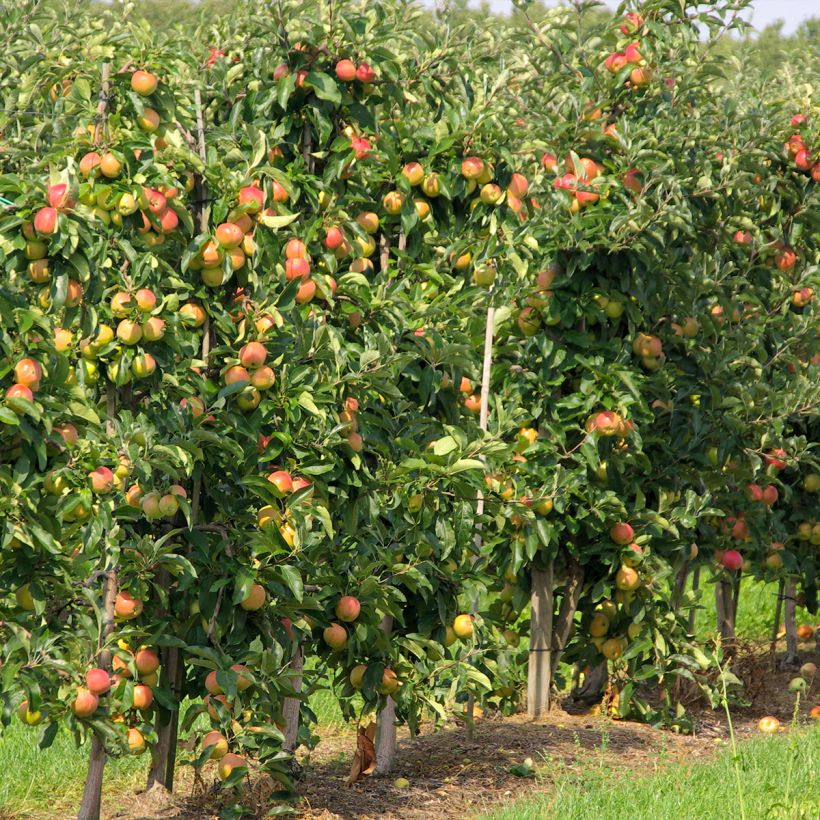

Plant habit
Fruit
Flowering
Foliage
Botanical data
Malus
domestica
Versailles® 'delgrico'
Rosaceae
Apple, Orchard apple, Table apple, Cultivated apple
Cultivar or hybrid
Other Apple trees
View all →Planting and care
Choose a well-sunny spot for your 'Versailles Delgrico' columnar apple tree, the soil can be slightly chalky or acidic, but not excessively. Dig a wide planting hole at least 3 times the volume of the root ball. Simultaneously add organic matter (topsoil, compost...) and a base fertilizer like ground horn. Do not bury the graft collar. Stake if necessary. Water abundantly, even in winter, even if it rains. Fruit trees are ideally planted between October and March, outside the freezing period. Container-grown plants can be planted all year round except during periods of high heat or frost.
The advantage of columnar fruit trees is that they can be planted in containers for outdoor use. Choose a container of at least 60L. Make sure the container is perforated and provide good drainage by filling the bottom with a thick layer of clay pellets or gravel. In pots, your trees will naturally require more regular watering. In winter, move your fruit trees to a sheltered place away from the wind and stop watering during the freezing period. Practice at least every two years a surface dressing, which involves replacing at least the surface topsoil with fresh topsoil and fertilize before flowering, choose a special fertilizer that is not too rich in nitrogen.
In winter, at the base of the tree and slightly incorporated into the surface of the soil, you can add a small shovelful of wood ash, rich in potash, which will improve fruiting. Apple trees can be prone to different diseases and pests. To limit risks, space the trees sufficiently, install multi-species hedges, birdhouses or insect hotels to attract beneficial insects. In summary, prioritize diversity. The main diseases of apple trees are scab (brown spots on leaves), brown rot (wilting of flowers and rotting of fruits on the tree), and powdery mildew (white coating on leaves). For these three cases, preventive action is preferred by spraying a decoction of horsetail; as a last resort and during severe attacks, you can apply a treatment based on Bordeaux mixture. As for pests, the codling moth (or fruit worm) is a small caterpillar that tunnels inside the fruit, resulting from the laying of a butterfly's eggs. To remedy this, it is preferable to act preventively by promoting the presence of tits and bats through the installation of birdhouses. In case of aphid attack, spray a solution based on black soap.
During the harvest in September, only keep the picked fruits. For good storage, it is desirable to place the apple with its stem downwards, on shelves or in crates. Choose a preferably completely dark, dry and cool place, but frost-free.
Planting period
Intended location
Care
Planting & care advice
This item has not been reviewed yet - be the first to leave a review about it.
Similar products
Haven't found what you were looking for?
Hardiness is the lowest winter temperature a plant can endure without suffering serious damage or even dying. However, hardiness is affected by location (a sheltered area, such as a patio), protection (winter cover) and soil type (hardiness is improved by well-drained soil).

Photo Sharing Terms & Conditions
In order to encourage gardeners to interact and share their experiences, Promesse de fleurs offers various media enabling content to be uploaded onto its Site - in particular via the ‘Photo sharing’ module.
The User agrees to refrain from:
- Posting any content that is illegal, prejudicial, insulting, racist, inciteful to hatred, revisionist, contrary to public decency, that infringes on privacy or on the privacy rights of third parties, in particular the publicity rights of persons and goods, intellectual property rights, or the right to privacy.
- Submitting content on behalf of a third party;
- Impersonate the identity of a third party and/or publish any personal information about a third party;
In general, the User undertakes to refrain from any unethical behaviour.
All Content (in particular text, comments, files, images, photos, videos, creative works, etc.), which may be subject to property or intellectual property rights, image or other private rights, shall remain the property of the User, subject to the limited rights granted by the terms of the licence granted by Promesse de fleurs as stated below. Users are at liberty to publish or not to publish such Content on the Site, notably via the ‘Photo Sharing’ facility, and accept that this Content shall be made public and freely accessible, notably on the Internet.
Users further acknowledge, undertake to have ,and guarantee that they hold all necessary rights and permissions to publish such material on the Site, in particular with regard to the legislation in force pertaining to any privacy, property, intellectual property, image, or contractual rights, or rights of any other nature. By publishing such Content on the Site, Users acknowledge accepting full liability as publishers of the Content within the meaning of the law, and grant Promesse de fleurs, free of charge, an inclusive, worldwide licence for the said Content for the entire duration of its publication, including all reproduction, representation, up/downloading, displaying, performing, transmission, and storage rights.
Users also grant permission for their name to be linked to the Content and accept that this link may not always be made available.
By engaging in posting material, Users consent to their Content becoming automatically accessible on the Internet, in particular on other sites and/or blogs and/or web pages of the Promesse de fleurs site, including in particular social pages and the Promesse de fleurs catalogue.
Users may secure the removal of entrusted content free of charge by issuing a simple request via our contact form.
The flowering period indicated on our website applies to countries and regions located in USDA zone 8 (France, the United Kingdom, Ireland, the Netherlands, etc.)
It will vary according to where you live:
- In zones 9 to 10 (Italy, Spain, Greece, etc.), flowering will occur about 2 to 4 weeks earlier.
- In zones 6 to 7 (Germany, Poland, Slovenia, and lower mountainous regions), flowering will be delayed by 2 to 3 weeks.
- In zone 5 (Central Europe, Scandinavia), blooming will be delayed by 3 to 5 weeks.
In temperate climates, pruning of spring-flowering shrubs (forsythia, spireas, etc.) should be done just after flowering.
Pruning of summer-flowering shrubs (Indian Lilac, Perovskia, etc.) can be done in winter or spring.
In cold regions as well as with frost-sensitive plants, avoid pruning too early when severe frosts may still occur.
The planting period indicated on our website applies to countries and regions located in USDA zone 8 (France, United Kingdom, Ireland, Netherlands).
It will vary according to where you live:
- In Mediterranean zones (Marseille, Madrid, Milan, etc.), autumn and winter are the best planting periods.
- In continental zones (Strasbourg, Munich, Vienna, etc.), delay planting by 2 to 3 weeks in spring and bring it forward by 2 to 4 weeks in autumn.
- In mountainous regions (the Alps, Pyrenees, Carpathians, etc.), it is best to plant in late spring (May-June) or late summer (August-September).
The harvesting period indicated on our website applies to countries and regions in USDA zone 8 (France, England, Ireland, the Netherlands).
In colder areas (Scandinavia, Poland, Austria...) fruit and vegetable harvests are likely to be delayed by 3-4 weeks.
In warmer areas (Italy, Spain, Greece, etc.), harvesting will probably take place earlier, depending on weather conditions.
The sowing periods indicated on our website apply to countries and regions within USDA Zone 8 (France, UK, Ireland, Netherlands).
In colder areas (Scandinavia, Poland, Austria...), delay any outdoor sowing by 3-4 weeks, or sow under glass.
In warmer climes (Italy, Spain, Greece, etc.), bring outdoor sowing forward by a few weeks.
































